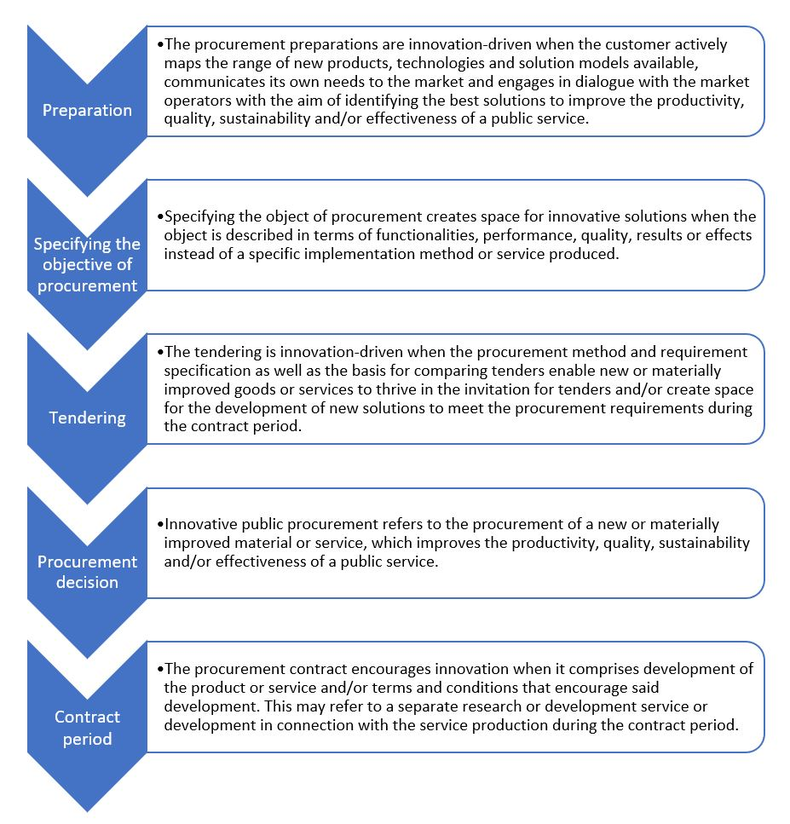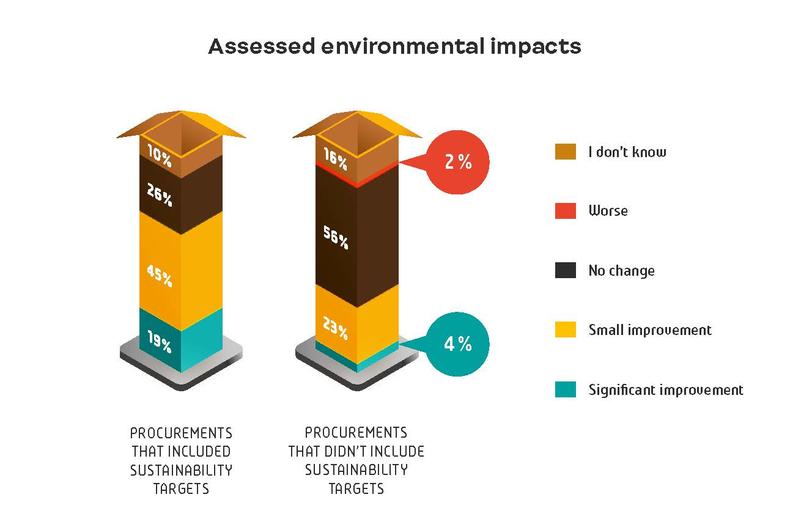Innovativeness of public procurement in Finland
Innovativeness in public procurements is manifest in different ways during the different stages of procurement (see Figure 1 below).
In the procurement process, the opportunity to innovate can be taken into account in the procurement preparations, when specifying the object of procurement as well as the invitation for tenders. An innovative and innovation-driven procurement process enables the acquisition of new and alternative solutions, for example, by means of an innovation partnership.
When it comes to the procurement decision, that is, the selected solution, innovativeness refers to whether the solution is new or significantly improved (for the procurer) and/or whether the solution is new to the market as well as the society (the solution is not yet widely used).

Novelty/innovativeness of selected solution
The innovativeness of the selected solution may be inspected from two complementary aspects: 1) novelty to the procurer and 2) novelty for the market.
The premise of the division is that the product, solution or service subject to the invitation for tenders is new or a material improvement from the point of view of the organisation that carries out the procurement, if not necessarily for the market. For the procurer, the new solution may be socially important. It may also provide considerable added value with regard to performing the organisation’s tasks or developing the effectiveness of its operations, regardless of the object’s novelty value to the market.
The pages below provide you with information regarding the status of innovative procurement in Finland from two different viewpoints:
- Solutions that are innovative/new to the procurer and the procurement thereof in Finland in 2018
- Solutions that are innovative/new to the market and the procurement thereof in Finland in 2018
Effects of procurements aimed at new solutions/innovativeness
From a social perspective, it is essential that the procured innovative solutions help public organisations to better carry out their mandates. The improvement may be evident in service quality and/or improved productivity, sustainability or effectiveness.
Based on KEINOs survey:
- 75% of procurers estimated that a slightly or significantly improved solution had a positive effect on the procurement organisation’s service quality and ability to meet with the set operational effect targets.
- 67% of innovative acquisitions were deemed to have at least some kind of positive effect on the procurement organisation’s cost level or productivity.
- 40% of procurers thought that the procurement had positive effects on the environment, living conditions or well-being.
Innovative procurement has a positive impact on the
1) quality of services
2) the ability to meet with operational effect targets
3) cost level/productivity
4) the reduction of environmental effects.
Estimates on the positive impacts of innovative procurement on the sections 1-3 above regarding procurement categories are particularly highlighted in service procurements. On the other hand, more than 50% of the actors who had carried out innovative service procurements said that there had not been any changes to the environmental effects (4) as a result of the procurement.
Nonetheless, a higher-than-average number of positive environmental effects were identified in building contract and material acquisitions.
Regardless of the category of procurement, positive estimates regarding environmental impacts were more common in the innovative procurements that included sustainability targets or criteria.
Based on the survey carried out by KEINO, innovative acquisitions that included sustainability targets had, on average, the most positive effects on the procured solution’s cost level/productivity and social impacts.
On the other hand, innovative acquisitions that did not include sustainability targets had the most positive effects on service quality and the ability to meet with the set operational effectiveness objectives.
